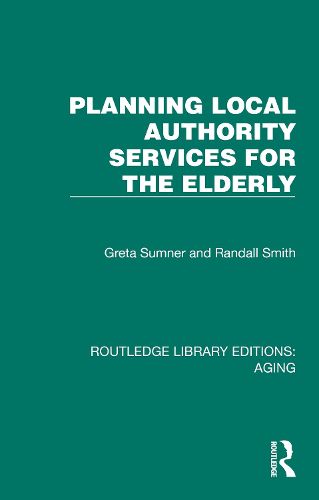Readings Newsletter
Become a Readings Member to make your shopping experience even easier.
Sign in or sign up for free!
You’re not far away from qualifying for FREE standard shipping within Australia
You’ve qualified for FREE standard shipping within Australia
The cart is loading…






In the 1960s, planning the development of services for the elderly was a subject of considerable importance in Britain, both because existing services were known to be inadequate, and because the proportion of older people, especially of those over seventy-five, was expected to increase during the next thirty years. Originally published in 1969, this book describes how a sample of local authorities were planning their services for the elderly, how they estimated the need for services and the availability of resources, and how they linked their plans with those of other organisations. By providing a deeper understanding of the difficulties faced by local authority officials when trying to plan, and by suggesting a realistic approach to planning, the report made a valuable contribution towards putting the planning of services for the elderly on to a sound basis. It would have been helpful to all those concerned with the planning and administration of the social services at the time. At the same time the historical background and the insight given into the operation of local authority services should still be of interest to readers today.
$9.00 standard shipping within Australia
FREE standard shipping within Australia for orders over $100.00
Express & International shipping calculated at checkout
In the 1960s, planning the development of services for the elderly was a subject of considerable importance in Britain, both because existing services were known to be inadequate, and because the proportion of older people, especially of those over seventy-five, was expected to increase during the next thirty years. Originally published in 1969, this book describes how a sample of local authorities were planning their services for the elderly, how they estimated the need for services and the availability of resources, and how they linked their plans with those of other organisations. By providing a deeper understanding of the difficulties faced by local authority officials when trying to plan, and by suggesting a realistic approach to planning, the report made a valuable contribution towards putting the planning of services for the elderly on to a sound basis. It would have been helpful to all those concerned with the planning and administration of the social services at the time. At the same time the historical background and the insight given into the operation of local authority services should still be of interest to readers today.